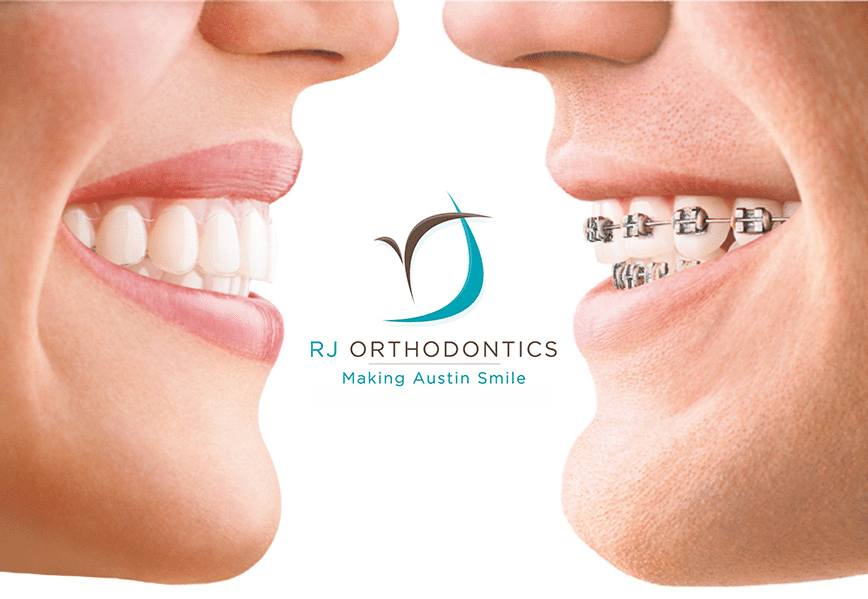When it comes to repairing your smile, you really have two main choices: braces or Invisalign. This leads many people to wonder if there are significant differences between the two choices, especially in terms of how effective the treatments will be in fixing your teeth. Price may be a consideration, as well, although some people are willing to pay more if it means a better outcome. The primary goal, whether you want to fix your own teeth or give your child a straighter smile, is to choose the option that will have the longest lasting effect.
Braces vs. Invisalign: What Are They?
Either option is intended to improve your smile by straightening your teeth and helping you return to a better state of oral health. At this point, braces are often more popular among people, simply because they have been around longer. Invisalign was only introduced in 2000, so they’re still fairly new.
Most people have a pretty good idea about what getting braces entails. It’s a metal bracket, which is glued to your teeth. The braces are also tied together with small wires and rubber bands. Originally, braces were all the color of the metal, but technology has given us more options. Today, you can get braces that come in a color that matches tooth enamel, so they’re less noticeable. Other colors are also available for those interested in using their braces as a fashion accessory.
You won’t get those same choices with Invisalign, because this corrective device is intentionally designed to be unseen. The aligner trays that shift your teeth gently and gradually are made of a clear plastic, so it won’t be noticeable to others. The plastic is BPA-free, so it’s safe for long-term use. Impressions, along with X-rays and photos will help the dentist form aligner trays that precisely fit the patient’s mouth, so the device can be configured for the best results.
Treatment times also vary between the two products. Braces are worn 24 hours a day for a period of up to two years. Some patients may wear braces for a shorter time, while others may have to wear braces longer than the two years. It will depend on the specific circumstances of each case. Invisalign is also worn up to 24 hours a day, though some patients may be able to remove the device for two hours per day. Invisalign works faster, so it’s typically only necessary to wear them for six to 18 months. Again, this will depend on the specific condition of each patient’s oral health.
Maintenance also varies between the two products. Since braces aren’t removable, they must be brushed along with the patient’s teeth. A water pick can help get to hard to reach crevices. Typically, Invisalign comes with its own cleaning system. Conversely, the patient can also brush and rinse the aligner trays in lukewarm water.
Patients wearing braces must return to have them adjusted once per month. Invisalign patients have to change their aligner trays every two weeks and will need to schedule office visits every four to six weeks, until the aligner trays are no longer needed.
Braces: The Pros and Cons
Pros
- Predictable results since it doesn’t rely on the compliance of patients.
- They aren’t removable, so the temptation to stop wearing them is eliminated.
Cons
- Pain and sores may develop, as the brackets and wires cause tooth movement.
- Challenging hygiene may cause tooth discoloration
- Eating sticky or hard foods may not be possible.
- Braces are not recommended for individuals who play rough contact sports (In this case, mouthguards are highly recommended)
Invisalign: The Pros and Cons
Pros
- They are invisible and removable.
- There’s no concern for food getting caught in the device.
- There’s also no difficulty with eating.
- The device doesn’t cause discomfort or pain.
Cons
- There is a chance that patients will lose aligners
- The aligner must be removed to eat or drink, except in cases where the patient is drinking water.
- Treatment can be less than ideal if patient does not wear aligners as instructed.
- Invisalign is not recommended for patients who will not have the discipline to keep the trays in place for 22 hours per day.
Invisalign is not recommended for patients with bridgework, back tooth bite problems, or those who will not have the discipline to keep the trays in place for 22 hours per day. Additionally, those who need vertical tooth alignment or need to have their premolars or canines rotated should consider more traditional braces.
In some cases, Invisalign may be the more attractive option, but it’s not without its drawbacks. The ability to remove the trays at will can be as much of a curse as a blessing, particularly because the patient will have to remember to remove it before every meal. Additionally, the discomfort cause by tooth movement can make it tempting to not wear the device for prolonged periods. This can disrupt the process of correcting the teeth and lead to more expenses for the patient, or for parents of the patient.
When you’re trying to decide between braces and Invisalign, it’s important to weigh all of the factors carefully. A consultation with Austin Orthodontist, Dr. RJ Jackson will help you better understand the process for each method, so you can make a more informed decision. Since the goal is to only have to correct one’s teeth once, you want to make the choice that’s going to be the most effective for your unique circumstances.

